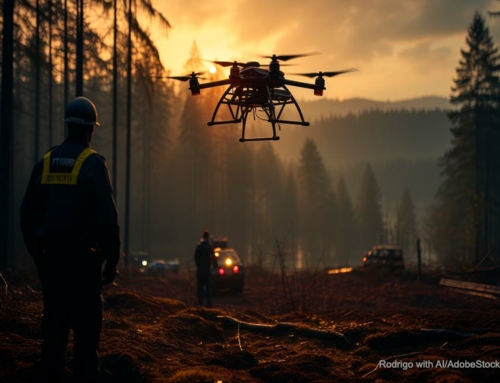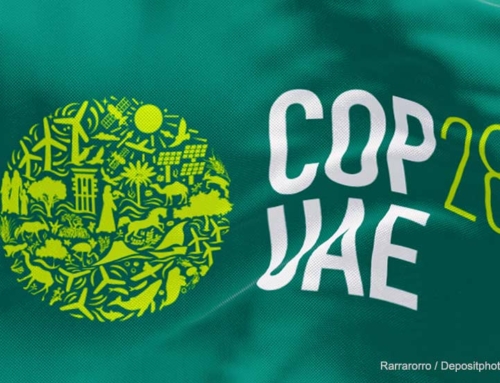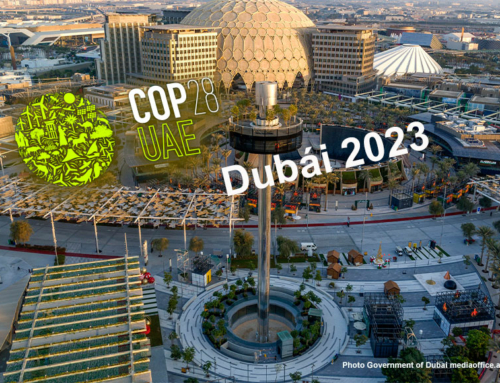The 1950s were times of mixed feelings. World War II was just over. The smell of gunpowder had not vanished when the reconstruction of Europe and Japan began. The people, although they did not forget their dead, began to live life in the hope that peace and well-being would be permanent. That vision of a better world made many begin to have children. The “baby boom” did not wait, and the population doubled in just forty years, a growth never seen in the history of mankind. From three billion inhabitants in 1960 the population went to six billion in 2000.
As if that were not enough, the needs multiplied more than the people. The consumer society, the cheaper products, the new publicity and the massification of television increased the pressure on the resources available on the planet. Cars and airplanes reproduced like mushrooms, emitting jets of CO2 into the atmosphere. Forests began to deforest in a hostile way to satisfy the construction, furniture and paper markets. Wildlife populations began to decrease alarmingly. Air, soil and water became contaminated and degraded. The cities were transformed into overcrowded and polluted megacities, where pollution would make breathing difficult.
Early alerts that were not heard
At that time some scientists were warning about anomalies in the Earth’s climate system. To support their warnings, they were based on their discoveries, added to those made since the nineteenth century by their colleagues, the climate pioneers.
At that time the press began to review these discoveries. American Scientist published in 1956 a series of articles on the subject. In 1957, The Hammond Times mentioned the terms “global warming” and “climate change” and warned about the effects of large-scale CO2 use. In 1975 Wallace Smith Broecker advised: “Climate change: are we on the verge of pronounced global warming?”
In 1972 Sweden and the UN organized the First Earth Summit. There, the Stockholm Declaration, comparable to the Declaration of Human Rights, aimed at the normalization of human beings’ relations with the environment came to light. The spirit of the “Truly Homo Sapiens” floats in its 26 beautiful statements. There is everything that had to be done to stop the accumulated danger and to accumulate. We were still on time.
From the “Great Acceleration of the 50” to the “Hyper Acceleration of the 70”
But neither the early warnings nor the Earth Summit achieved their mission. In the second half of the twentieth century, most countries did what they wanted. From the “Great Acceleration of the 50” we go to the “Hyper Acceleration of the 70”, both denominations coined by men of science. In this way they synthesized their alerts, but their accusations were cries to silence, because they were not heard by most of the receivers.
After Stockholm, scientists continued to insist. In 1976, the statement of Mikhail Budyko, a Russian climatologist, “global warming has begun,” was widely disseminated. In 1979 the Academy of Sciences of the United States, headed by Jule Charney, described the effects of CO2 in a broader way, attributing its use to the increase in climate change. In 1988, James Hansen, a NASA climatologist, testified before the United States Senate that man-made warming had already greatly affected the global climate. Since then the term global warming became popular in the press and the street language.
The summit of Rio-92, mother of the great climatic challenges of the 21st century
Thus, we arrived at the Second Earth Summit, Rio de Janeiro 1992. There the continuity was given to the 26 imperishable statements of Stockholm and therefore impossible hide under the bed. Rio-92 produced preponderant documents. There are seven major challenges to face the problems of the Earth:
The “Rio Declaration on Environment and Development.” The “United Nations Framework Convention on Climate Change” (UNFCCC). The “COP, Conferences of the Parties”, annual meetings on climate change. Declaration of principles relating to forests. “The” Convention to Combat Desertification. “The” Convention on Biological Diversity “and” Agenda 21 “, a detailed guide to promote sustainable development. More complete impossible.
But the documents were very theoretical, flexible and susceptible to get lost in the bureaucratic tangles and to be devoured by the jaws of corruption. Mostly non-binding, since they left the free will of countries the solutions to the disease of the Earth. They were difficult to control and easy to evade. The road was open to national sovereignty as a protective shield against some “interference attempt”, even when it was about preserving the lives of all those who share this privileged blue habitat.
The birth of the Kyoto Protocol
The planet was left unprotected if something urgent was not done. Thus, the idea of creating a climate agreement that forced countries to comply with the recipes of the Second Earth Summit arose. To do this, what better way to use the newly created tool, the COP, in which almost all the nations of the Earth would meet annually to follow up on the problems of climate change. In theory, the “conference of the parties” were the solution to advance the various themes of Rio-92.
COP1 was held in Bonn, in 1995. It was in this German city where the negotiation of a climate protocol began that was ready for presentation at COP3. It touched the beautiful and picturesque Kyoto, gentle and kind Japanese city, baptize him with his name. This is how the Kyoto Protocol was born on December 11, 1997. It came into force eight long years later, on February 16, 2005. However, a great achievement for the moment, the first tangible consequence of the Rio-92 Summit.
The news ran like wildfire and for the first-time many men and women entered Kyoto into their vocabulary, along with other concepts related to the environment and the symptoms of the Earth. Phrases such as global warming, climate change, greenhouse effect, fossil fuels, carbon dioxide and others, were repeated more and more frequently throughout the world.
Everything seemed to go on rails
The Kyoto Protocol was emerging as one of the most important and hopeful documents of humanity to regulate anthropogenic activities, capable of recovering the global environment. However, the crucial Kyoto document had to travel a winding road that culminated in its collapse in twelve years. Who knocked it down? What was its content? What is your spirit? These are logical questions for those who are not involved in the subject.
We will begin by answering the last one. The spirit with which the Kyoto Protocol was drafted represented the commitment to reverse the damage that humans had done to the Earth. It was the first climate regulatory document about the planet. Having an agreement that would be signed by most countries on Earth was something that inspired many people. In theory, the recovery of lost time began in the second half of the twentieth century, almost at the threshold of the new millennium.
Regarding the content, the nations showed for the first time to agree that greenhouse gas emissions represented a risk and recognized that they had to be controlled. The industrialized countries committed themselves to a series of actions to reduce these emissions. The goal was set at 5% less than the levels prevailing in 1990, which should be achieved between 2008 and 2012.
Why wasn’t the good news in Copenhagen?
Finally, we arrive at the long awaited COP15, meeting that raised an immense expectation. It was thought that it would be up to the Danish capital the privilege of giving good news to the world by announcing a new protocol for the reduction of GHG emissions. In quantifiable terms, Kyoto meant reducing CO2 emissions to less than 50% by 2050 compared to 1990, through its innovative carbon market, supposedly designed to fight global warming.
However, with three weeks before the start of COP15, China and the United States met in Thailand and decided that the Copenhagen accords would not be binding, so that the destiny of the Summit was put down before it began.
On the last night of COP15 the presidents of China, the United States, India, Brazil and South Africa, without the presence of European representatives, or other countries, held a closed meeting to overthrow the Kyoto Protocol. In just three pages they wrote a non-binding agreement that was not even put to the vote. Finally, he was only exposed to the knowledge of the attendees, together with the promise that in early 2010 a political platform would be worked on, the basis for constructing binding legal commitments at COP16. Kyoto’s dream was over.
As expected, the summit was described as failure and disaster by many governments and environmental organizations. The Kyoto Protocol was buried there, since none of the attempts that were subsequently made were able to restore it.
We have let too much time pass.
The actions to stop climate change can no longer be postponed. Now it is the turn of the successor to the Kyoto Protocol, the Paris Agreement, which is supposed to be activated at COP26 Glasgow2020, a year that is emerging from a lot of tension and full of uncertainties.
Our great challenge is to defeat the black clouds on the horizon. Climate change deniers are still there, hidden in the shadows, behind keyboard batteries, multiplying their hate and misinformation campaigns through social networks, with their ‘hahaganda’, powerful mockery and insult to undermine the credibility of people and institutions, demoralize the audience with relative ease.
Against all odds, good must be imposed on evil to save life on Earth. We must all put our brains, hearts, arms and legs so that the Paris Agreement runs better luck than its Kyoto ancestor. Perhaps we are facing the last challenge of Homo sapiens.
Sandor Alejandro Gerendas-Kiss







Leave A Comment